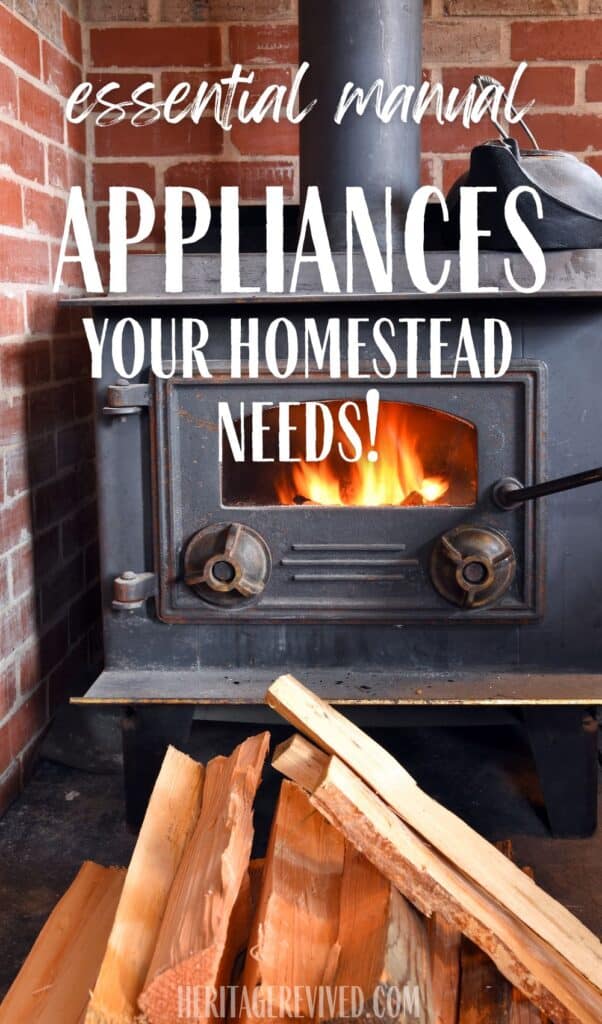Curious about which non electrical appliances you should have? Read about our top picks that can come in handy for a variety of reasons.
Having modern electrical appliances is a Godsend, and one I will never take for granted.
My grandma describes what a typical Sunday was like when she was young. Her dad would get up early before church to cull and dress a chicken for lunch that day.

Vegetables were stored in a root cellar, or attic to dry. Apples might be in a hole in the ground covered with leaves, depending on the season.
Everything else on the Sunday table came from a meager (yet well-stewarded) stock of home-canned goods or foraged berries and greens.
Preparing a meal before electricity certainly wasn’t simple, but it was the way of life for thousands of years.
Why have non electrical appliances today?
There are good reasons, even with electricity, to have some non-electrical options, especially in the kitchen.
Natural disasters can cause power outages that can last for days. It’s not always practical or possible to run a generator 24/7 in these times.
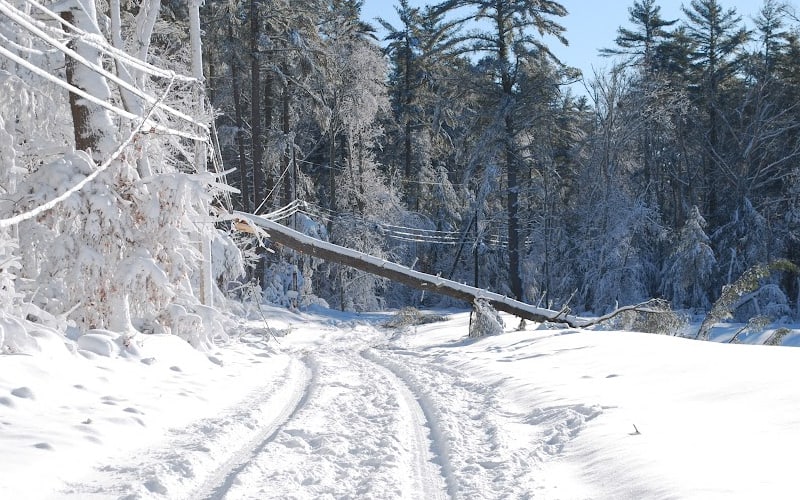
Other reasons would be simply to prepare for hard times in which electricity might be less available; to save money; or to keep up some of the skills that our grandmothers knew so well.
I’ve also found that doing some things “the old way” is strangely grounding. It takes a little longer to use some of these non-electrical appliances, and I find some sense of nostalgic satisfaction in doing so.
It can make you slow down and appreciate the conveniences you do have, as well. You might even find the outcome of these machines yields a better result than their modern counterparts!

This site contains affiliate links to products. As an Amazon associate, I earn from qualifying purchases. Please read my disclosure for more info.
Nonelectrical appliances every homesteader needs
Below are some of the items you might want to consider for your homestead, especially if you’re just in the planning stages of living more simply.
1| Wood Burning Cookstove
This is a big investment for most homesteaders, but it’s a popular choice for good reason. You can heat with it AND cook on it, no electricity needed.
And all you need really is proper installation and a good supply of firewood.
If you live on acreage (or have access to some), it can be a renewable, almost free way to heat your home and cook your meals.
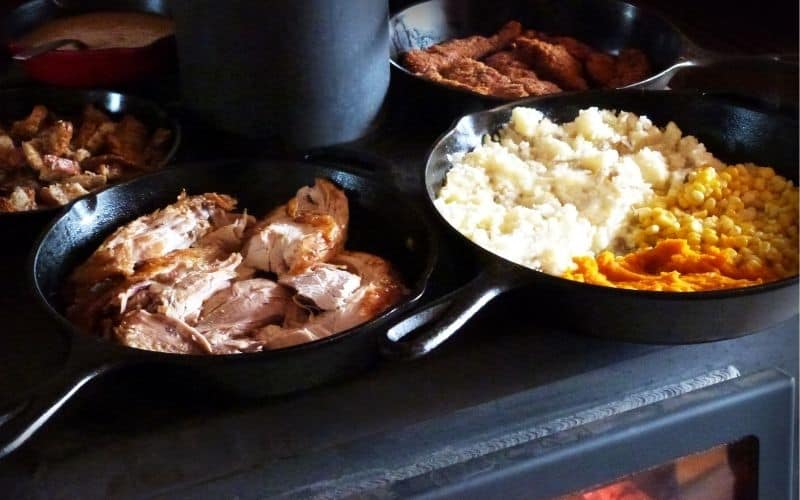
A few brands to check out:
2| Grain Mill
Baking bread has made somewhat of a mainstream comeback- but what would happen if there were to be a grain shortage?
Rather than stocking up on flour which can go rancid after a year or so, many families choose to store wheat berries which can last for 30+ years if properly stored with oxygen absorbers, in a sealed 5-gallon bucket.
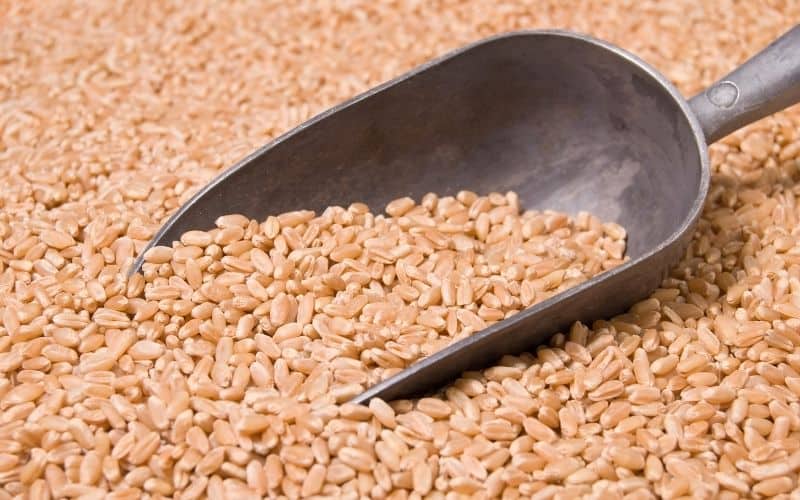
Hence, the need for a grain mill to grind those grains into usable flour. Electric mills are popular, but of course the manual grinder could be used as a backup, in the event electricity was not available.
Freshly milled wheat provides numerous health benefits. Plus, it’s a great workout if you go the manual route.
Azure Standard food co-op is my favorite place to buy wheat berries in bulk.
A few great options for manual grain mills:
3| Percolator or French Press
Some things just taste better using non-electrical methods, and coffee is one of them.
I’ve found that there’s nothing better than a cup of slow-percolated coffee.
A percolator can sit on a gas stove or be used over a campfire. The coffee grounds are placed in a tray inside and as the water heats it rises through the coffee grounds.
A French press is another slower method which just requires boiling water which is pressed through coffee grounds in a series of built in filters.
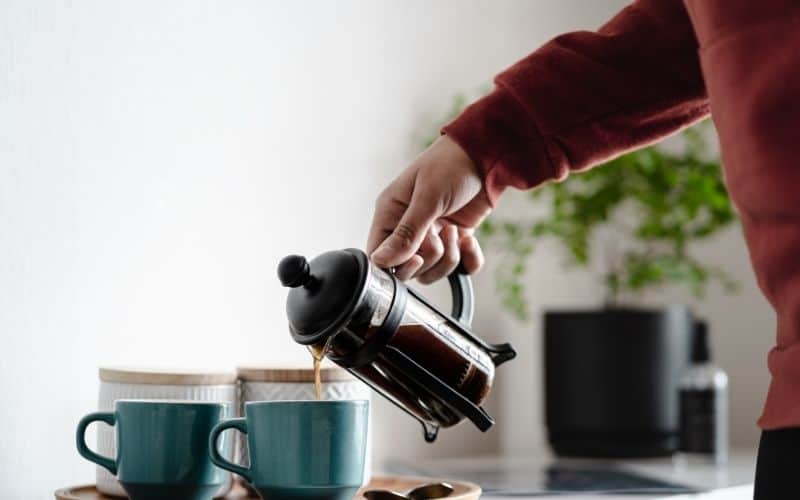
If you are ever without electricity and can’t go without your morning coffee, you’ll want to be sure and have a way to make it, and these two devices are a must-have.
Here are a few quality options:
Farberware Stainless Steel Percolator
4| Can Opener
I ditched our electric can opener years ago and haven’t looked back.
The manual version is easier to clean and seems to do a better job as well. It takes up less space in the kitchen, and I just prefer it now.
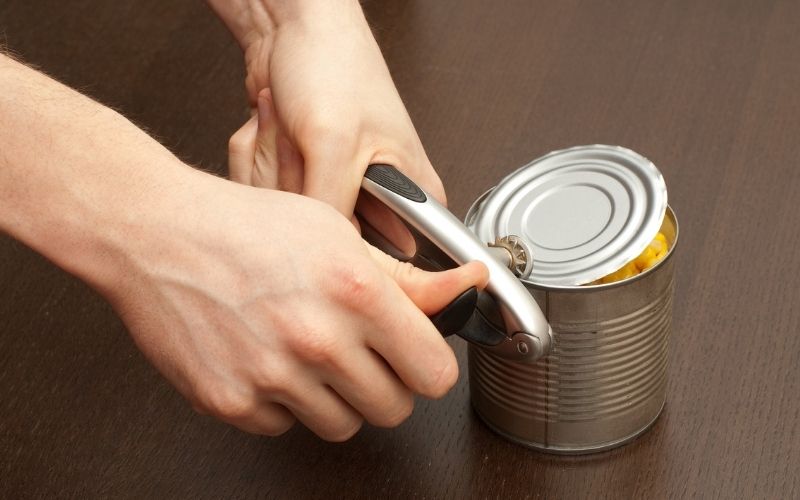
In a power outage, a can opener is invaluable for making a quick meal.
Hand-crank openers have come a long way in recent years.
Here are a few to consider:
KitchenAid multi-function can opener
5| Egg Beater/Mixer
While you can easily beat eggs with a fork, having this manual mixer can be helpful for a variety of purposes.
You can mix up not just eggs, but cake batters, whip cream, pudding, and whipped butter blends, for instance.

Some popular choices are:
Masterclass Stainless Steel Rotary Whisk
6| Oil Lamp
Once a decorative accent commemorating a foregone era, kerosene and other oil lamps are making a comeback as a useful source of light in an emergency.
Lamp oil can be stored for many years and one gallon can power a lamp for approximately 258 hours!
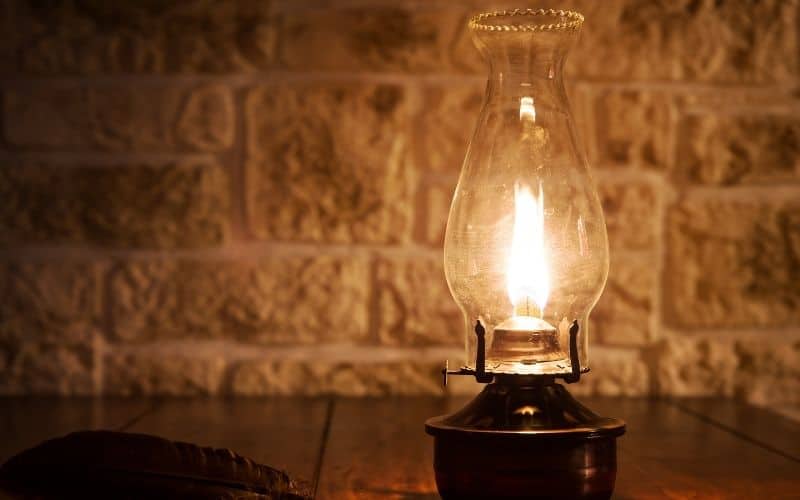
Most preparedness experts recommend lamp oil over kerosene as lamp oil is the purified version, making it clean burning. It also does not have the strong smell of kerosene.
A few great options:
7| Pressure Canner
You might not think of adding a pressure canner to this list, but having the ability to can meats and veggies could technically replace your need for a freezer.
In a situation of long-term power outage, you could perhaps quickly can some of your frozen meats on your propane stove or even electric stove, with the help of a generator.
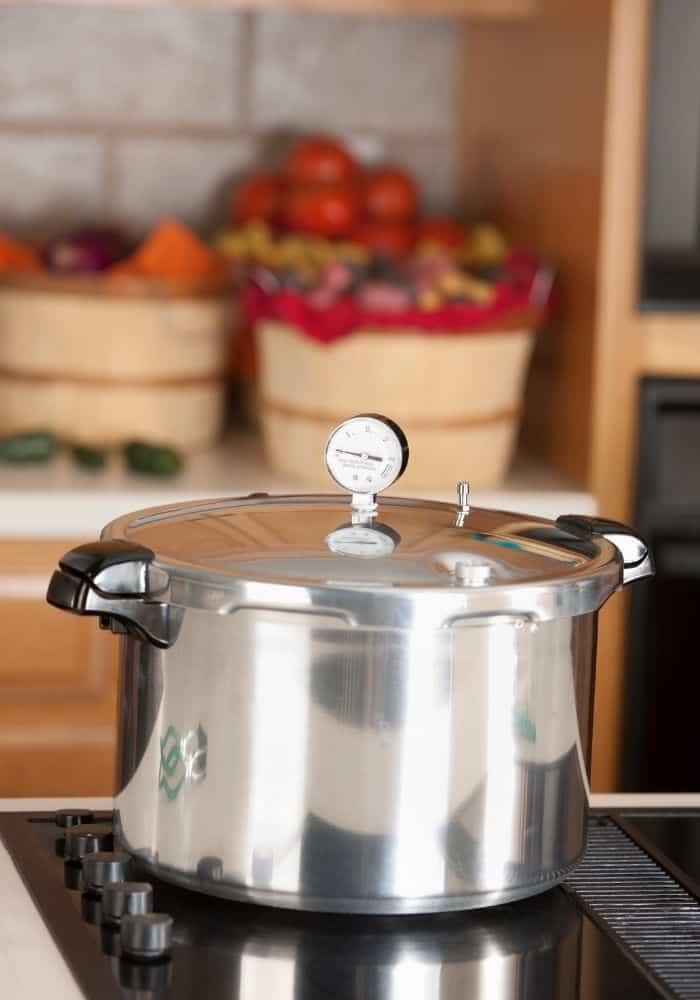
Beyond that, you could even learn to use your canner over a fire. It requires some practice, but it’s not impossible.
A few pressure canners that are highly recommended:
Presto 16-quart Pressure Canner
Graniteware 20-quart Pressure Canner
All American 15.5 Quart Pressure Canner
Nonelectrical appliances for peace of mind
The items on this list won’t turn your home into a completely off-grid homestead, obviously. But they are certainly nice to have around, and a good idea to learn how to use.
You never know what situations you might need to do things the “old-fashioned way”.
Having a variety of non-electrical appliances is just one step in becoming more self-sufficient, and I believe it’s an important one to get started on, even little by little.
Read next:
The Very First Steps for Starting your Homestead
Top Gift Ideas for Homesteaders
Planning and Organizing your Garden: Extensive Garden Planner Printable
